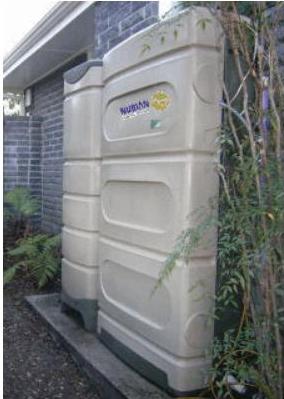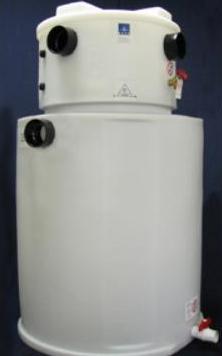Potable or drinkable water is a critical resource around the world. One way to reduce consumption is to reuse the water you have already consumed by installing a greywater system. This captures already used water for reuse in the toilets and in the washing machine. That would effectively cut annual water usage by 18,405 gallons and save $188 more bringing my savings up to $1,220.37 per year with only a slight change in behavior.
In America, the idea of greywater reuse can be scary to state and municipal Health Departments. In other parts of the world, particularly in arid places like Australia and in the Caribbean Islands, greywater reuse is commonplace. So what is greywater and who knew that the water in our houses had color grades?
There is potable or drinkable water that comes from the well or from the public water utility. Americans use this water for everything in their houses from drinking and cooking to flushing the toilet and doing the laundry. Flushing good drinking water down the toilet seems almost criminal to me. They also use it to wash their cars and to power wash sidewalks. That is something I will never understand – drinking water used to clean dirt away.
Black water is the water that flows out of the kitchen and the toilet. This water cannot be reused until treated by a water treatment plant or gradually leached out in a septic field.
Greywater is an odd duck. It is water that flows out from the washing machine, showers, bathtubs and bathroom washbasins. It is very feasible for this water to be captured and treated for reuse in the washing machine, to flush the toilets and to irrigate the garden and the ubiquitous American lawn. The potential for recycling greywater in the US is huge. The Water Reuse Association estimates that American households generate 75.5 gallons of greywater per day or 27,557 gallons of greywater per year!
With all of the conservation measures we have instituted our greywater generation is reduced to 59.7 gallons of greywater per day or 21,797 gallons of greywater per year. Although that’s a 21% decrease from the average, it is still significant.
Assuming permission can be obtained from the health department, I am thinking of installing a greywater recycling system in the basement. The two systems I have considered are the Nubian treatment system and the Brac system.
The Nubian system costs about $6,000 uninstalled.
This system requires little owner intervention, can be installed in the basement, has a slim profile and is chemical free. It relies on filtration to provide clean, clear, non-potable water. The Brac system costs about $2,574 uninstalled. This system requires owner monitoring and intervention and requires input of chlorine to the system. Both of the systems can manage the estimated daily flow. The Brac system treats and holds 92.3 gallons, the Nubian system treats and hold 317 gallons. In the best world I would choose the Nubian system and plumb it to feed the washer, toilets and the garden. Avoiding chlorine is important for the health of the planet and the plants but the system is pretty pricey.
So what would I do with all that water anyway?
The Nubian system has a capacity of 317 gallons. I could supply 59.7 gallons of greywater each day from the washer, sinks, showers and bathtub. I would use 12.5 gallons per day in the washer which leaves 47.2 gallons a day or 17,228 gallons per year for toilets and the garden.
My estimated toilet water demand is 13,829 gallons per year so the system would pretty well balance out leaving 3,400 gallons per year for the garden. (The DEP estimates that Americans use at least 10,000 gallons per year on their lawns alone.) At my current water utility rate the reduction in demand would equate to an annual savings of $176 per year for supply of water. At my current sewer rate, assuming I recycled the water once and avoided disposal of 59.7 gallons per day (21,791 gallons per year), that would equate to an annual savings of $241.87.
That means that if I install the Brac system there is a 7 year payback and the 15 years for the Nubian.
Greywater recycling systems are pricey but as they become more accepted in the American culture, the investment costs will decrease. Right now, decision tabled because of cost but we will revisit often and explore other ways to reduce costs – next up, rainwater capture.



{ 3 comments… read them below or add one }
Thank you for the post, very well done. I think Americans are going to come on board with recycling water in the next few years. Grey water and rainwater systems can sure help the recovery of precious clean water.
What is the gray water system doing for us? Why can’t we just use the washing machine water to water the lawn?
Does it filter the water? For what? Do the filters need to be changed? Why so expensive? We have already paid for the water, now we choose to reuse it…why so complicated?
Diane,
I decided to answer you in a post. Thanks for writing!
Amy